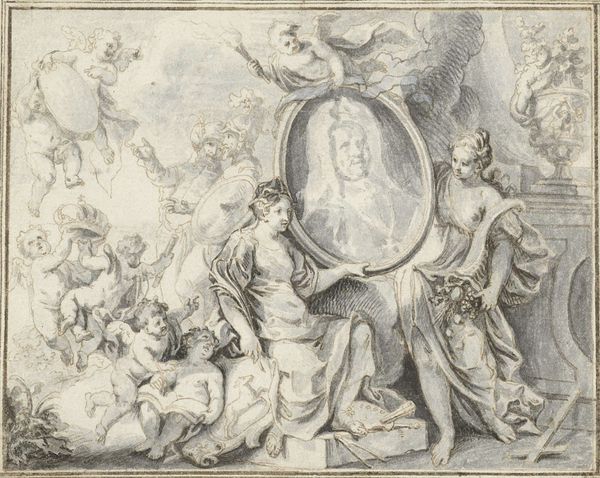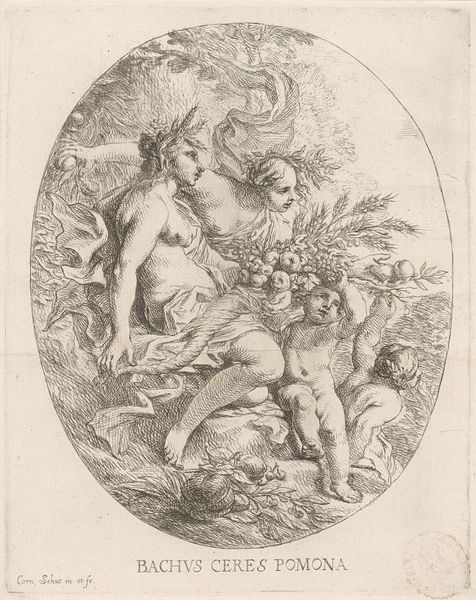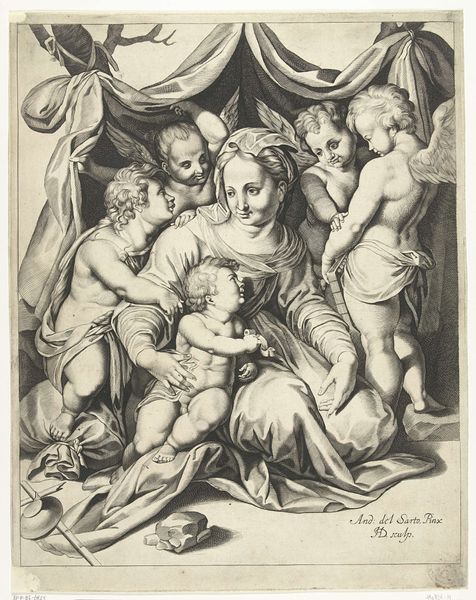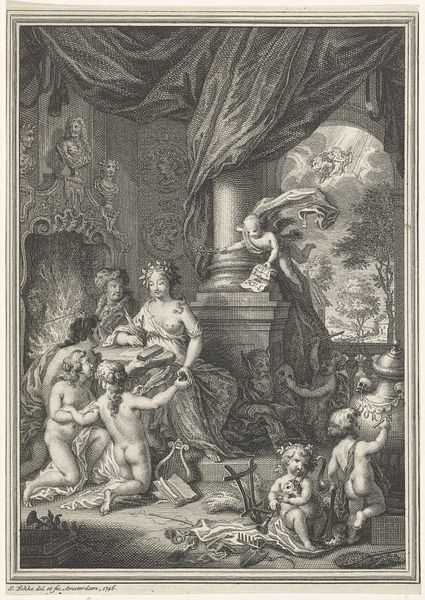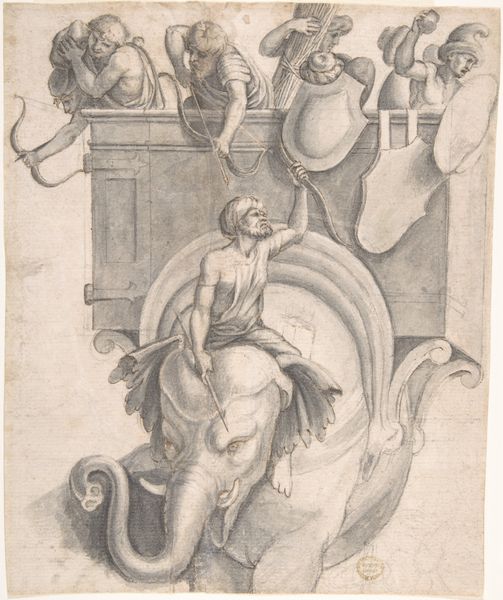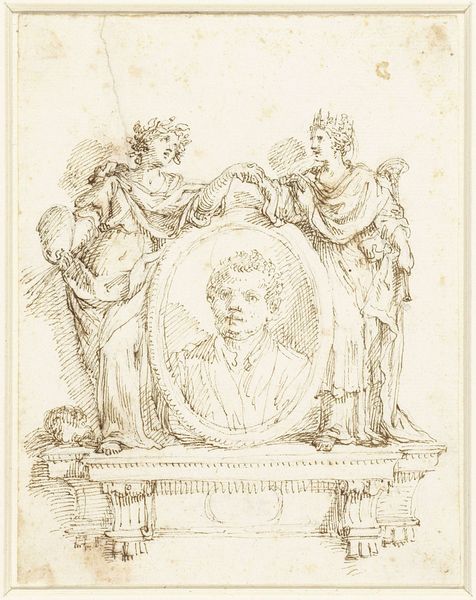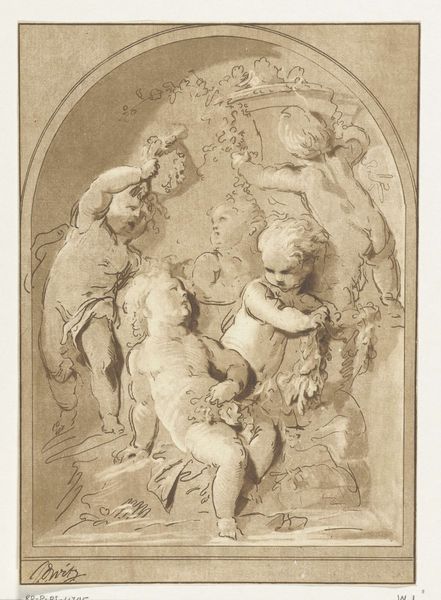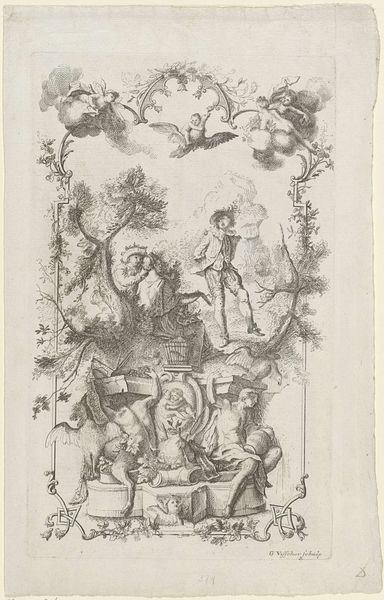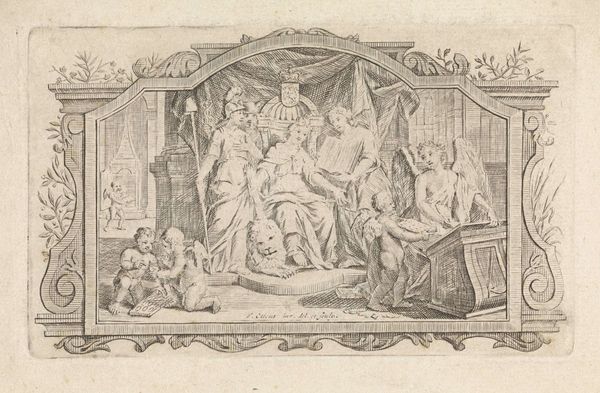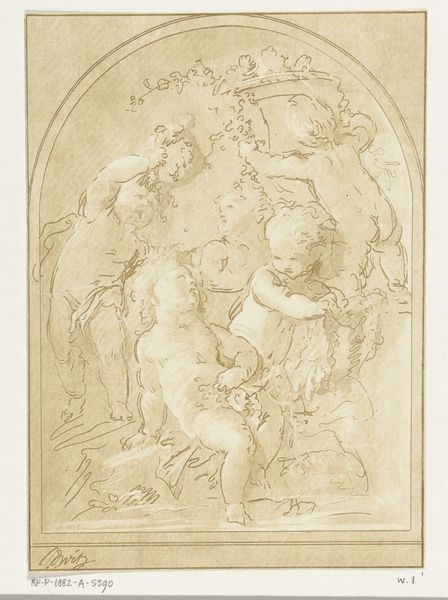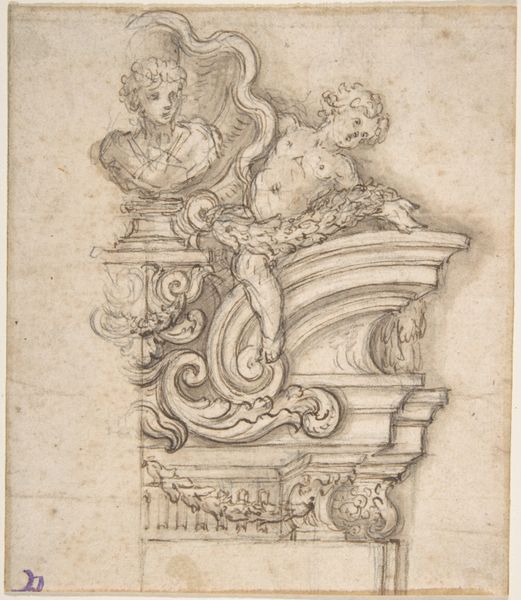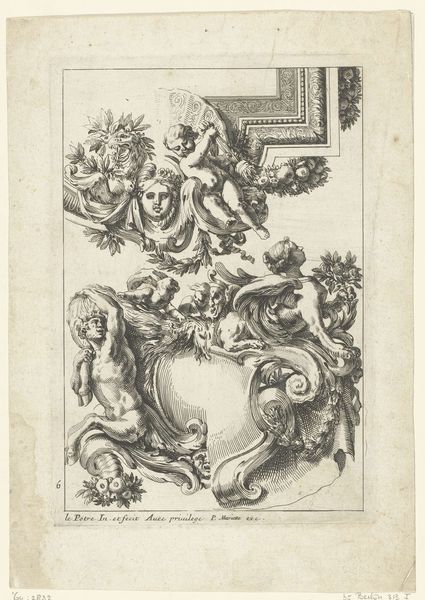
Dimensions: height 249 mm, width 194 mm
Copyright: Rijks Museum: Open Domain
Editor: Here we have Franciscus Xaverius Xavery's "Portretmedaillon omringd door putti" from 1761, a Baroque pencil drawing. I’m struck by the way the artist combines the solemn portrait with playful, almost mischievous-looking putti. What stories do you think this piece is trying to tell? Curator: Indeed, it is more than just a portrait; it's a carefully constructed allegorical image. Notice how the putti are not just decorative. The one with the trumpet is sounding a fanfare, perhaps proclaiming the virtues of the person in the portrait. Consider also the sword, the helmet, the shield… alluding to noble or heroic qualities. Editor: So, the putti aren't just cherubic figures; they're actively involved in glorifying the portrait's subject? What does it mean to stage these figures in relation to the portrait? Curator: Exactly. They amplify the qualities the artist wants us to associate with the individual. Think of how Baroque art often used dramatic imagery to convey power and importance. The symbolic weight lies in these intentional deployments. Editor: It’s interesting how the artist merges the real with the allegorical in this way. It really does communicate power. Curator: The image becomes a statement, deeply entrenched in cultural ideals and perhaps even personal aspirations of the sitter or the commissioner. It's about shaping memory through image, wouldn't you agree? Editor: Definitely. The cultural values are really brought forward through these symbols, like mini stories contained within the artwork. Curator: It makes you think about how we create and interpret portraits today, doesn’t it? The choices of symbols are rarely accidental. Editor: It does. I’ll definitely be more aware of these visual cues going forward.
Comments
No comments
Be the first to comment and join the conversation on the ultimate creative platform.
